- Agriculture contributes 20pc to GDP but suffers from low productivity, weak policies, and poor planning.
- Farmers earn minimal profit as fertilizer, feed, and diesel costs rise without policy relief.
Interview with Mr. Shakir Umar Gujjar, President of the Dairy and Cattle Farmers Association (DCFA) Pakistan
Profile:
Mr. Shakir Umar Gujjar, the President of the Dairy and Cattle Farmers Association (DCFA) Pakistan, is a prominent national leader of dairy farmers and livestock producers in Pakistan. Under his dynamic leadership, DCFA Karachi has evolved from a city-level body into a nationally recognized platform representing dairy and cattle farmers across the country.
The DCFA serves as a unified voice for milk producers, dairy farmers, and cattle breeders, working to protect farmers’ interests and promote a sustainable, profitable, and modern dairy sector. The Association now has provincial offices in Sindh, Punjab, Khyber Pakhtunkhwa, and Balochistan, ensuring strong coordination and representation of dairy farmers in every region.
Mr. Shakir Umar Gujjar has played a pivotal role in highlighting farmers’ issues at provincial and federal levels, advocating for fair milk pricing, feed and input cost rationalization, veterinary health support, and breed improvement programs. Through his proactive engagement with the government, policymakers, and media, he has successfully brought national attention to the challenges of the dairy sector and pushed for farmer-friendly reforms.
DCFA’s major objectives include:
Fair milk pricing and protection from middlemen exploitation.
Breed improvement, animal health, and modern dairy practices.
Farmer training, feed management, and disease control programs.
Coordination with Livestock Departments, KMC, and provincial authorities for farm licensing, milk quality, and animal welfare.
Under the leadership of Mr. Shakir Umar Gujjar, DCFA Karachi has become a credible and progressive organization, representing the true voice of dairy and cattle farmers across Pakistan, and contributing significantly to the development of a resilient and productive livestock economy.
PAGE: What is the current state of agriculture sector in Pakistan?
Shakir Umar Gujjar: Agriculture remains the backbone of Pakistan’s economy, contributing around 19-20% to GDP and employing nearly 38-40% of the labour force. However, the sector faces low productivity, water scarcity, poor technology adoption, and weak research-extension linkages. The livestock sector contributes about 60% of agriculture’s value and nearly 14% of national GDP, yet productivity per animal and per acre remains well below international standards due to poor genetic potential, weak policy support, and fragmented institutional efforts.
PAGE: How would you comment on import of sugar, wheat and vegetables despite being primarily an agro-economy?
Shakir Umar Gujjar: The import of basic food commodities such as wheat, sugar, pulses, and vegetables reflects policy inconsistency, poor planning, and weak governance in Pakistan’s agro-economy. Despite being an agriculture-based country, Pakistan imported over 3 million tons of wheat and 0.2 million tons of sugar in recent years, along with large quantities of onions and tomatoes — crops that are locally produced in abundance.
These imports arise from low per-acre yield, inefficient supply chains, hoarding, and failure to maintain national buffer stocks. Rather than investing in yield improvement, better seed, and modern storage systems, policymakers often resort to costly imports that drain foreign exchange and discourage domestic farmers.
The absence of a coherent National Food Security Policy, weak coordination between federal and provincial governments, and neglect of research-based decision-making have further deepened this crisis. Despite having fertile land, diverse agro-climatic zones, and one of the world’s largest irrigation networks, Pakistan faces periodic shortages of essential commodities due to poor management and lack of accountability.
With proper planning, forecasting, and investment in storage and processing infrastructure, Pakistan can not only achieve self-sufficiency but also become a net exporter of wheat, sugar, and vegetables in the region.
PAGE: What is your standpoint on incentives for farmers by the incumbent government?
Shakir Umar Gujjar: The government’s Kissan Package worth Rs. 1,800 billion is a positive initiative, offering credit, fertilizer subsidies, and tax reliefs. However, the implementation and outreach remain weak, and nearly 65% of small farmers are unable to access these facilities due to procedural hurdles and lack of awareness.
In the livestock and dairy sector, which produces over 65 billion liters of milk annually, farmers still receive no structured price support, no insurance coverage, and no incentives for breed improvement or feed quality enhancement. To make these incentives meaningful, the government must ensure inclusive access, transparent delivery mechanisms, and link research with field productivity so that small farmers can directly benefit.
PAGE: How would you comment on return on investment to farmers?
Shakir Umar Gujjar: The return on investment (ROI) for farmers in Pakistan is critically low due to rising input costs, inefficient market systems, and lack of policy support. Over the past five years, fertilizer prices have increased by nearly 60%, feed by 70%, and diesel prices have doubled, while output prices have shown minimal improvement.
In the crop sector, farmers earn barely 20–25% net profit after deducting expenses and middlemen commissions. In the dairy sector, producers receive only Rs. 130–160 per liter of milk, while consumers pay Rs. 250–300, meaning farmers retain less than 30% of the retail value.
Although livestock contributes about 60% to agriculture GDP and nearly Rs. 5 trillion annually to the national economy, the absence of structured pricing, insurance coverage, and genetic improvement programs keeps profitability low. To improve ROI, the government must ensure minimum support prices for milk and meat, develop direct farmer–market linkages, promote cooperative marketing, and expand credit and insurance facilities for small and medium-scale farmers.



